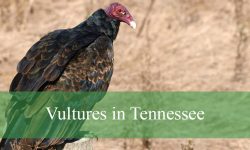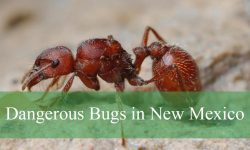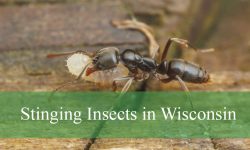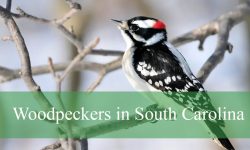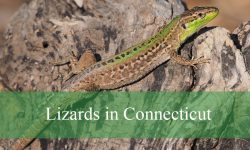Nevada is a true paradise for bird lovers, offering an incredible variety of habitats that attract an amazing array of feathered friends. From the shimmering desert heat to the cool mountain forests, the birds in Nevada never fail to captivate with their colors, songs, and behaviors. Every outing feels like a new discovery waiting to happen.
Watching birds in Nevada is more than just a hobby — it’s a chance to connect with nature in its purest form. The diversity here means you can spot everything from the cheerful chirps of the House Finch to the majestic soar of the Red-tailed Hawk. Each bird tells a story about the land, its seasons, and the delicate balance of life.
In this guide, I’m excited to share 35 of the most common and fascinating birds in Nevada. With vivid pictures and detailed descriptions, you’ll be ready to identify these incredible species on your next adventure. Let’s dive into the vibrant world of Nevada’s winged wonders!
Common Birds Found in Nevada
House Finch
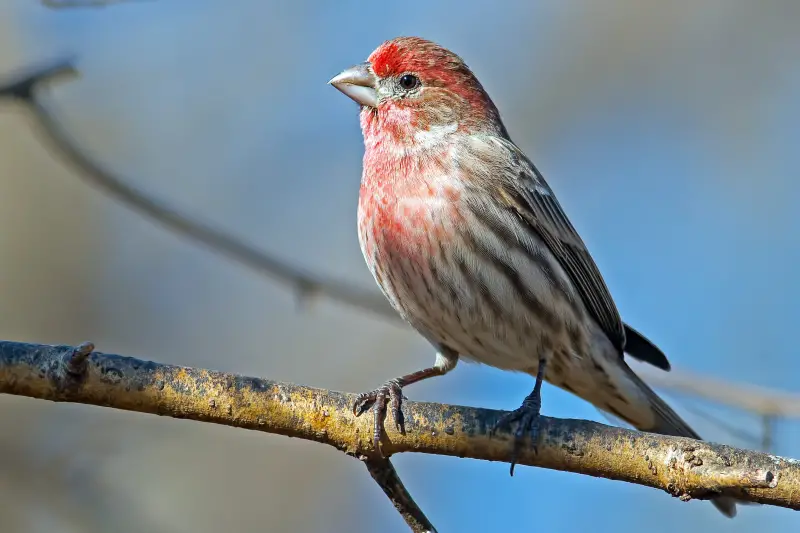
The House Finch is a small, social songbird that thrives in both urban and natural habitats across Nevada. Males are easily recognized by their rosy red heads and chests, while females display more subdued brown streaks. Both sexes have a short, conical beak and notched tail. Adults typically measure around 5 to 6 inches in length with a wingspan of 8 to 10 inches.
Their cheerful, warbling song is a common sound in suburban neighborhoods, especially during the early morning hours. House Finches are highly adaptable and often seen in flocks visiting feeders or perching on power lines and rooftops. Males sing to establish territory and attract females, often from a high vantage point.
In Nevada, they are widespread throughout the state, from Las Vegas backyards to desert canyons and foothills. Their diet includes seeds, fruits, and buds, and they readily consume black oil sunflower seeds at feeders. Their nesting habits are flexible, often building nests in hanging planters, vents, or native shrubs.
Mourning Dove
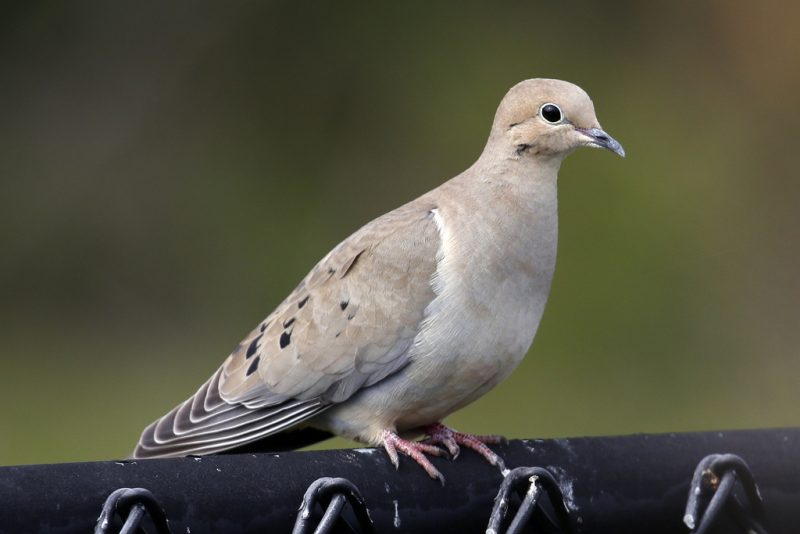
The Mourning Dove is a slender, graceful bird with a soft gray-brown body, black spots on the wings, and a distinctive long, pointed tail edged in white. Adults are about 9 to 13 inches long with a wingspan of 17 to 18 inches. Their plumage allows them to blend seamlessly into arid Nevada landscapes.
They are named for their haunting, cooing song, which sounds like a soft lament. Mourning Doves are known for their swift, whistling flight and their ability to adapt to a wide range of environments. You’ll often see them foraging on the ground in open fields, desert edges, or suburban lawns.
In Nevada, Mourning Doves are commonly seen throughout the state year-round, especially in southern regions like Clark County. They feed mostly on seeds, grains, and small fruits. These birds nest in trees, cacti, or even hanging flower pots, often producing multiple broods during the breeding season.
European Starling
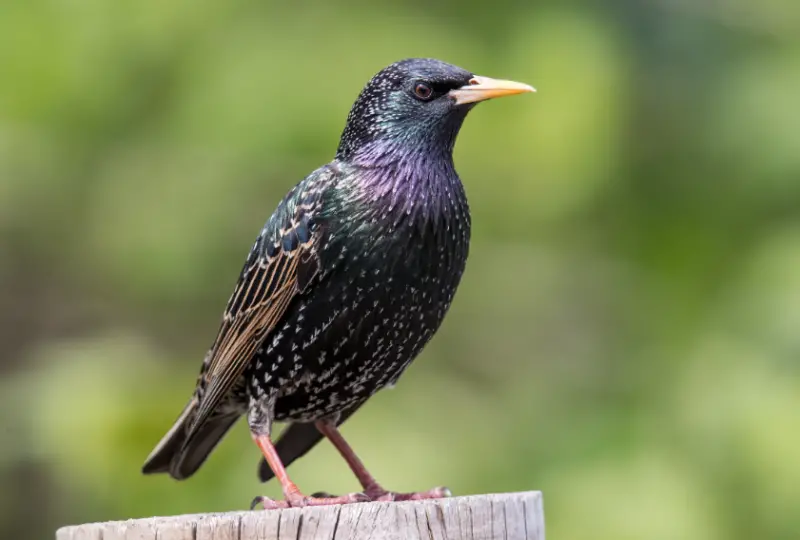
The European Starling is a medium-sized, stocky bird with iridescent black plumage speckled with white, especially in winter. Their sharp, yellow beak and short tail help distinguish them from other species. Measuring about 8 inches long with a wingspan of 12 to 16 inches, they often appear in large, noisy flocks.
Starlings are highly vocal and mimic a wide variety of sounds, including car alarms and the calls of other birds. Their whistles, clicks, and squeals combine into a complex, often chaotic chorus. These birds are aggressive and social, frequently displacing native species at feeders and nesting sites.
In Nevada, European Starlings are common around cities, farmlands, and open woodlands. They are year-round residents in places like Reno, Las Vegas, and Carson City. Omnivorous and opportunistic, they consume insects, fruits, and grains. They nest in cavities, often using vents, crevices, and old woodpecker holes.
American Robin
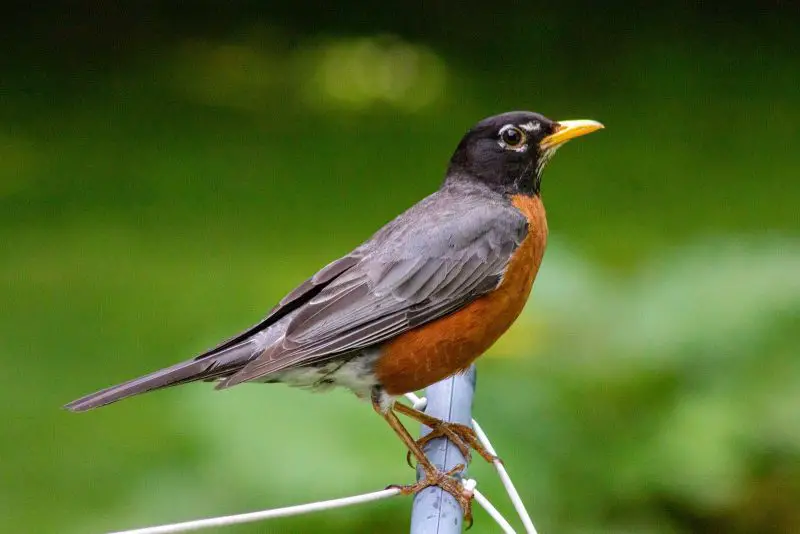
The American Robin is a familiar and welcome sight throughout Nevada, known for its orange-red breast, dark gray upperparts, and cheerful song. Adults measure 9 to 11 inches in length with a wingspan of 12 to 16 inches. Their white throat streaked with black and white eye ring help in identification.
Their song is a series of rich, whistled phrases often heard at dawn and dusk. Robins are active foragers, frequently hopping across lawns in search of earthworms. They are mostly solitary or seen in small groups, except in winter when they may form large flocks around fruiting trees.
In Nevada, American Robins are seen year-round in some areas, particularly in northern parts and higher elevations, but more commonly in spring and fall during migration. Their diet includes worms, insects, and a variety of berries. They build cup-shaped nests in trees, ledges, or on manmade structures.
White-crowned Sparrow
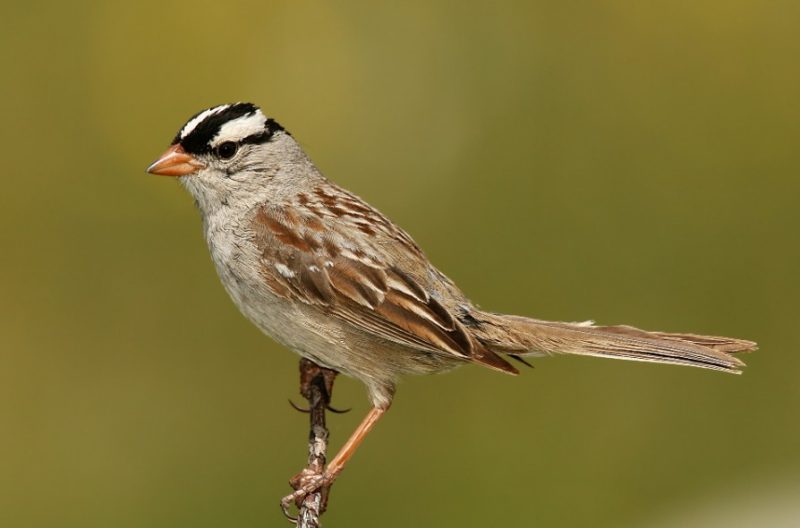
The White-crowned Sparrow is a striking bird with bold black and white stripes on its head, grayish face and chest, and brown-streaked back. Adults measure about 6 to 7 inches in length with a wingspan of roughly 9 inches. Their clear facial markings make them easy to recognize even at a distance.
Their song is a sweet, whistled series of notes that varies slightly between regional populations. White-crowned Sparrows are ground feeders, scratching at leaf litter or snow for seeds and insects. They are often seen hopping beneath shrubs or low trees, especially in parks and desert thickets.
In Nevada, these sparrows are winter visitors in the southern desert regions, like Las Vegas, and can be found in higher elevation forests during migration. They feed mostly on seeds, berries, and small invertebrates. During the colder months, they frequent backyards and brushy areas, often foraging in flocks.
Rock Pigeon
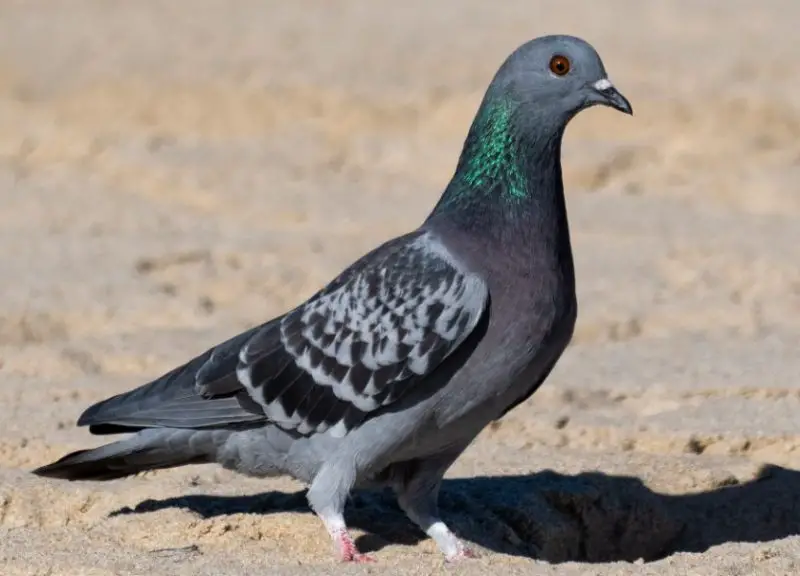
The Rock Pigeon is a robust bird with a plump body, short legs, and a rounded tail. Most individuals display bluish-gray feathers with two black wing bars and an iridescent green and purple sheen around the neck. They range in size from 11 to 14 inches in length, with a wingspan of about 20 to 26 inches.
These pigeons are known for their cooing calls and strong, direct flight. Rock Pigeons are highly social and often found in large flocks roosting on rooftops, bridges, or other urban structures. They walk with a distinct bobbing head motion and are quick to adapt to human environments.
In Nevada, Rock Pigeons are especially abundant in cities like Las Vegas and Reno, where they are year-round residents. They feed on grains, seeds, bread crumbs, and scraps, often foraging on sidewalks, parking lots, and farm fields. Nests are usually built on building ledges, overpasses, or rocky outcrops.
Northern Flicker
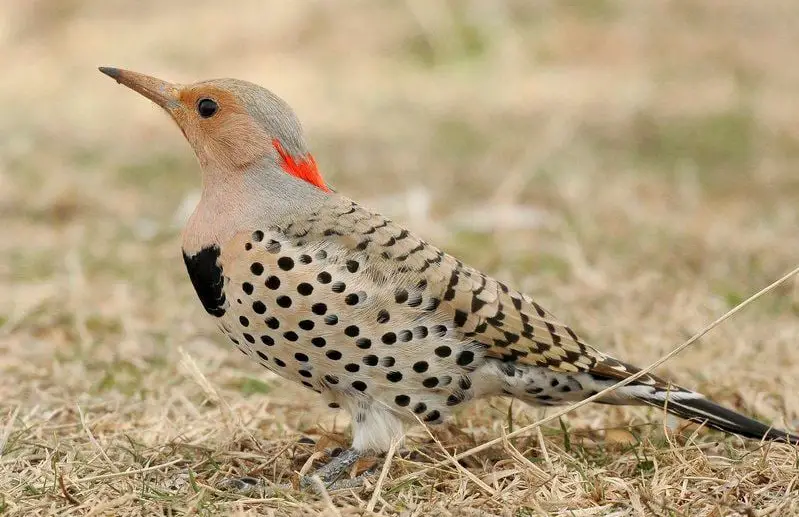
The Northern Flicker is a large, striking woodpecker with a brown body covered in black spots and a black crescent on the chest. In the western “red-shafted” form, common in Nevada, the undersides of the wings and tail flash a vivid red-orange in flight, and males have a red mustache stripe on the face. They measure about 11 to 14 inches long with a wingspan of 17 to 21 inches.
Their call is a loud, repeated “kleer” and they also make rhythmic drumming sounds on trees and metal objects. Unlike most woodpeckers, Northern Flickers often forage on the ground for ants and beetles, using their slightly curved bill to dig into the soil. They also eat fruits and seeds, especially in winter.
In Nevada, they are commonly found in open woodlands, suburban parks, and desert washes, especially near water or trees. They are year-round residents in many regions, though some migrate seasonally. Nests are typically located in tree cavities or occasionally in manmade wooden structures.
Lesser Goldfinch
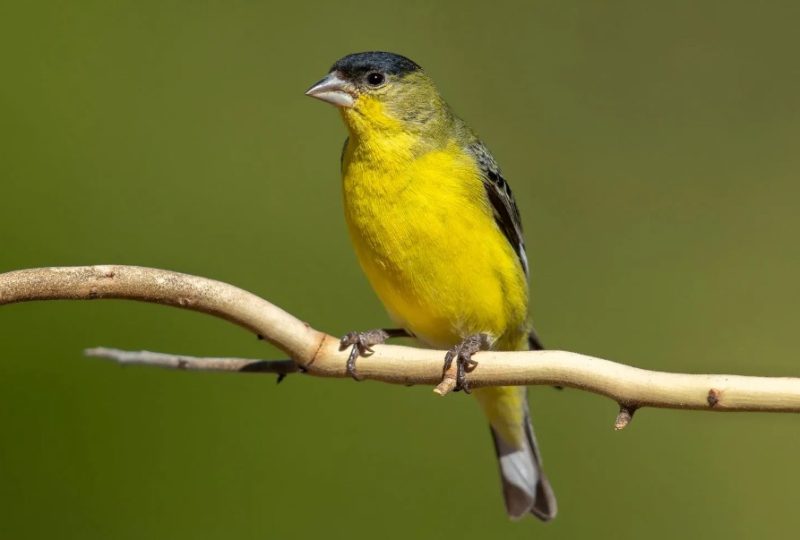
The Lesser Goldfinch is a small, lively bird known for its cheerful presence and striking colors. Males have a black cap and back with bright yellow underparts, while females are more olive-green and yellow. These birds measure around 4.5 inches long with a wingspan of about 8 inches.
Their sweet, warbling song and constant chittering calls make them easy to detect even when hidden in foliage. Lesser Goldfinches are agile and active, often seen hanging upside-down on flower heads as they feed. They are social birds, frequently forming small flocks that flutter from tree to feeder.
In Nevada, they are widespread in the southern and western regions, especially in riparian zones, suburban gardens, and desert scrub. Their diet includes seeds from sunflowers, thistles, and dandelions. They regularly visit bird feeders stocked with nyjer or black oil sunflower seeds and nest in shrubs or small trees.
Dark-eyed Junco
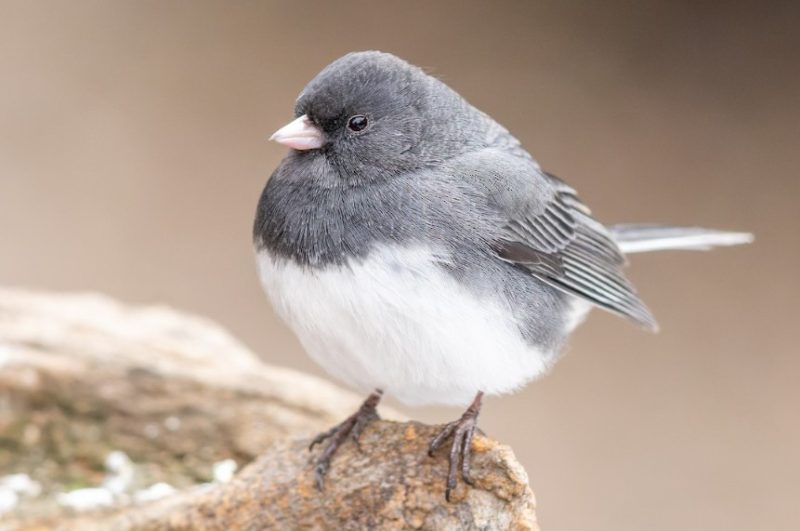
The Dark-eyed Junco is a medium-sized sparrow with a rounded head and clean, simple markings. In Nevada, the “slate-colored” and “Oregon” forms are most common, both featuring dark hoods, pink bills, and white outer tail feathers that flash in flight. Adults are typically 5.5 to 6.5 inches long with a wingspan of around 9 inches.
They produce a high-pitched trill and soft chip calls, often heard while they forage on the ground. Juncos are active and quick, frequently hopping beneath feeders or along woodland edges. They’re especially noticeable during the colder months when they gather in loose flocks around residential areas.
Dark-eyed Juncos are winter visitors in most of Nevada, though some may remain in high-elevation forests year-round. They feed primarily on seeds and small insects, often scratching in leaf litter or snow. Their nests are well-hidden, typically built on the ground or tucked into low shrubs and tree roots.
Northern Mockingbird
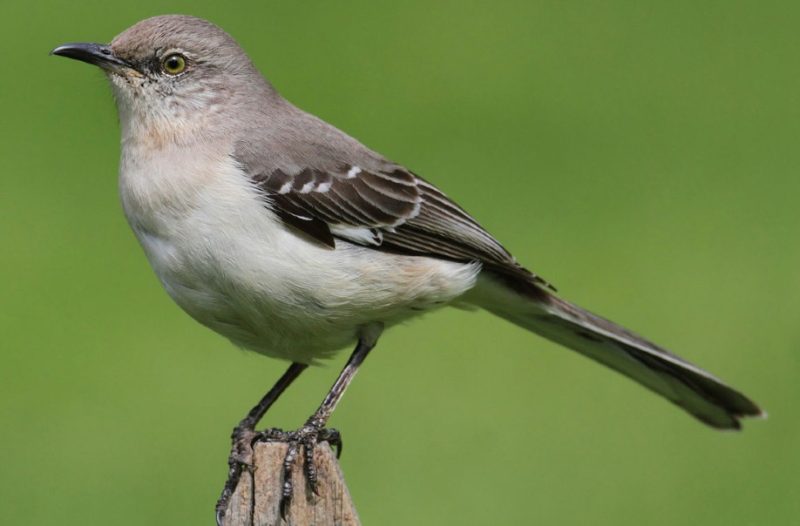
The Northern Mockingbird is a slender, medium-sized songbird with a gray body, long tail, and white wing patches that flash dramatically in flight. It measures about 9 to 10 inches in length with a wingspan of 12 to 14 inches. The long legs and upright stance give it a distinctive, alert appearance.
Famed for its vocal talents, the Northern Mockingbird can mimic dozens of other bird songs and manmade noises. Males sing almost constantly during spring and summer, often from a high perch. Their behavior is highly territorial; they will aggressively defend their nesting area from intruders.
In Nevada, they are most common in the southern desert areas, including Las Vegas and surrounding valleys. They inhabit residential neighborhoods, mesquite thickets, and dry brushy fields. Their diet consists of insects, berries, and fruits, and they readily visit yards with berry bushes or water sources.
Yellow-rumped Warbler
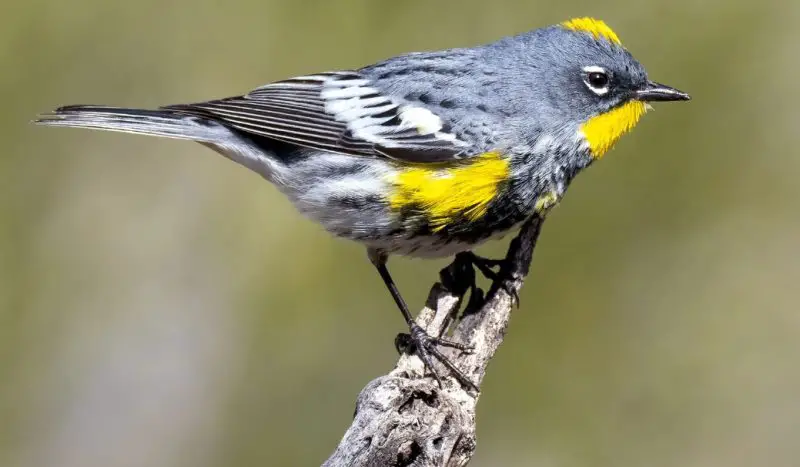
The Yellow-rumped Warbler is a small, energetic songbird that stands out with its streaked gray body, bright yellow patches on the rump, sides, and crown, and white underparts. During breeding season, males have bolder contrasts, while wintering birds appear more subdued. Adults are around 5.5 inches long with a wingspan of about 9 inches.
Their call is a sharp “check” sound, and their song is a soft, melodic trill. Yellow-rumped Warblers are highly active, often seen flitting through trees, sallying out to catch insects, or hovering briefly to pick berries. They are quite adaptable and are among the earliest warblers to migrate in spring.
In Nevada, they are common during migration and winter, especially in woodlands, parks, and desert oases. Unlike most warblers, they can digest waxy berries like juniper and bayberry, which allows them to stay further north in winter. Their varied diet includes insects, caterpillars, and fruits.
Western Meadowlark
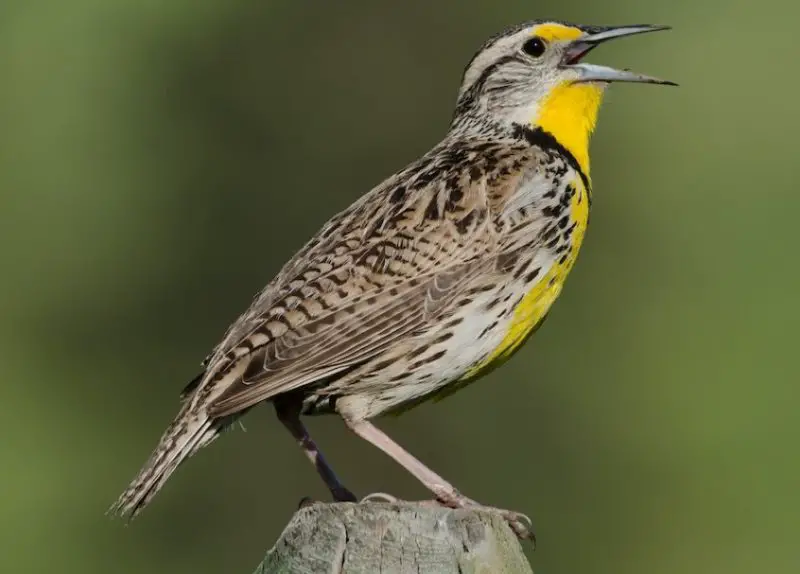
The Western Meadowlark is a chunky, ground-dwelling songbird with a bold yellow chest marked by a black “V,” streaked brown upperparts, and a short tail with white outer feathers. It measures about 9 inches long with a wingspan of 14 to 16 inches. When seen in open fields, its upright posture is a key trait.
Its song is a beautiful, flutelike series of whistles, often delivered from a fence post or tall grass. Males sing to defend territories and attract mates. Despite their loud songs, Western Meadowlarks can be surprisingly secretive, often dropping into grass and freezing when disturbed.
In Nevada, they are found year-round in grasslands, agricultural fields, and desert plains, especially in the northern and central regions. They forage mostly on the ground, eating insects, beetles, and seeds. Their nests are built in shallow ground depressions, often hidden under dense vegetation.
Say’s Phoebe
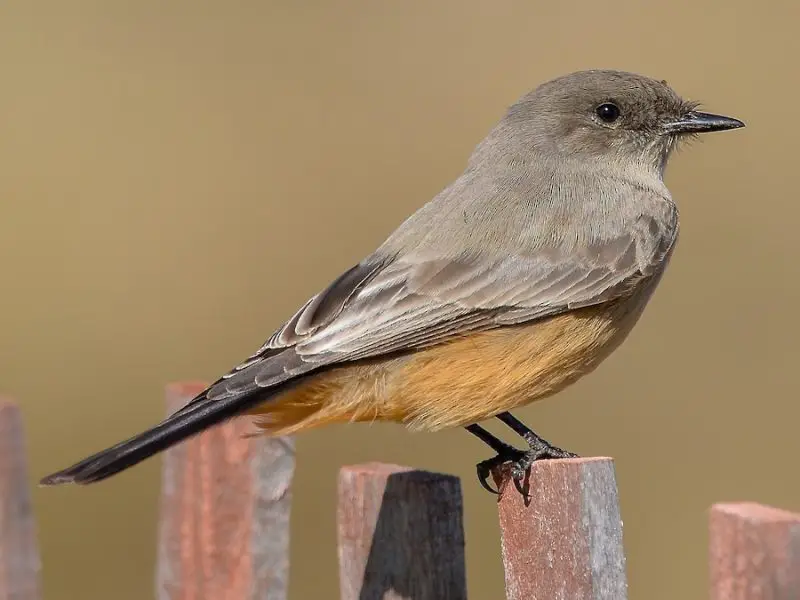
Say’s Phoebe is a slim, flycatcher with soft grayish-brown upperparts, a pale throat and breast, and a cinnamon-colored belly. Its long tail and upright posture give it a graceful appearance. Adults are around 7.5 inches in length with a wingspan of approximately 13 inches.
The bird’s call is a thin “pit” or a raspy, drawn-out whistle. Say’s Phoebe is often seen perched on fences or low shrubs, making short flights to capture insects midair. They frequently pump their tails while perched and are solitary in nature during much of the year.
In Nevada, Say’s Phoebes are found throughout the state, especially in dry open habitats like desert flats, sagebrush areas, and canyon cliffs. They are one of the few flycatchers that stay into the cooler months, especially in southern Nevada. Their diet consists mainly of flying insects and spiders. Nests are commonly built under eaves, bridges, or inside barns.
American Kestrel
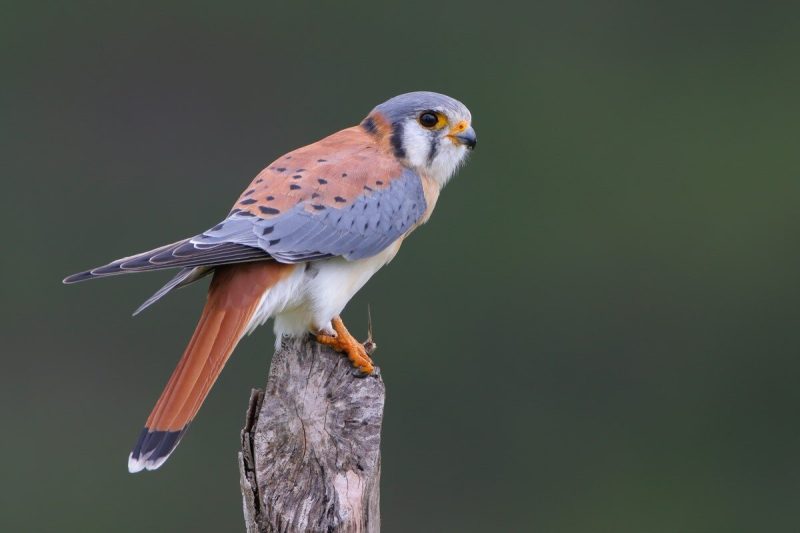
The American Kestrel is North America’s smallest falcon, with striking plumage and a compact build. Males have blue-gray wings and a rusty back and tail, while females are more uniformly reddish-brown. Both sexes feature bold facial markings and black vertical bars on a pale face. Adults range from 8 to 11 inches in length with a wingspan of 20 to 24 inches.
Their call is a sharp, high-pitched “klee-klee-klee” often heard as they hover or perch on utility lines. American Kestrels hunt by hovering midair and scanning the ground for prey, especially in open areas. They catch insects, small mammals, and birds, often swooping quickly and silently from above.
In Nevada, American Kestrels are widespread in open grasslands, farmlands, desert basins, and roadside areas. They are year-round residents in many parts of the state, nesting in cavities such as woodpecker holes or nest boxes. Their adaptability to human-altered landscapes makes them a frequent sight even near urban edges.
Gambel’s Quail
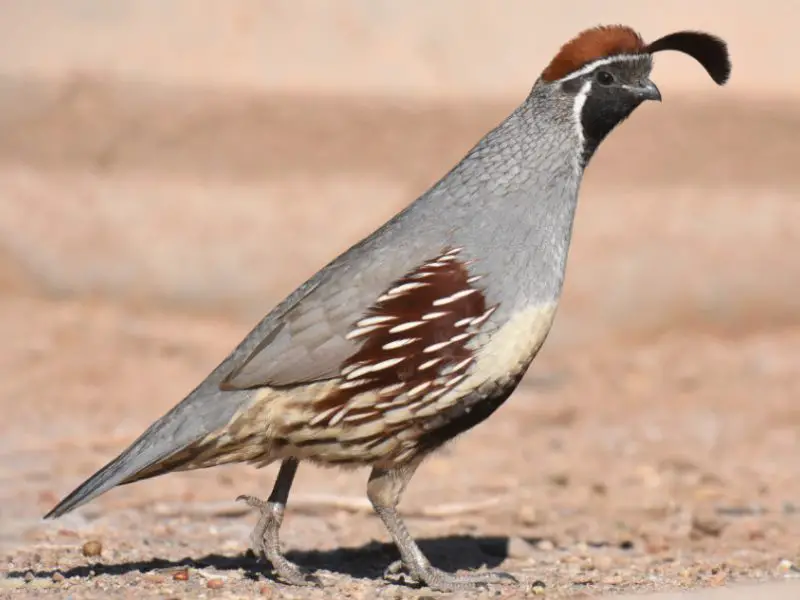
Gambel’s Quail is a plump, ground-dwelling bird with a striking forward-drooping head plume, grayish body, scaled belly, and chestnut-colored cap. Males are more vividly marked, while females are more subdued with similar body shape and patterning. These birds measure about 9 to 11 inches long with short, rounded wings.
Their calls include a loud “chi-ca-go” and various clucks and whistles used for keeping contact within coveys. Gambel’s Quail are highly social and typically travel in family groups. They are quick on the ground and prefer running to flying unless alarmed, at which point they burst into short, noisy flight.
In Nevada, they are especially common in the southern desert regions including Las Vegas, where they inhabit desert scrub, washes, and mesquite thickets. Their diet includes seeds, leaves, berries, and insects. Nests are shallow ground depressions concealed under shrubs or cactus, and they often raise large broods.
Black-chinned Hummingbird
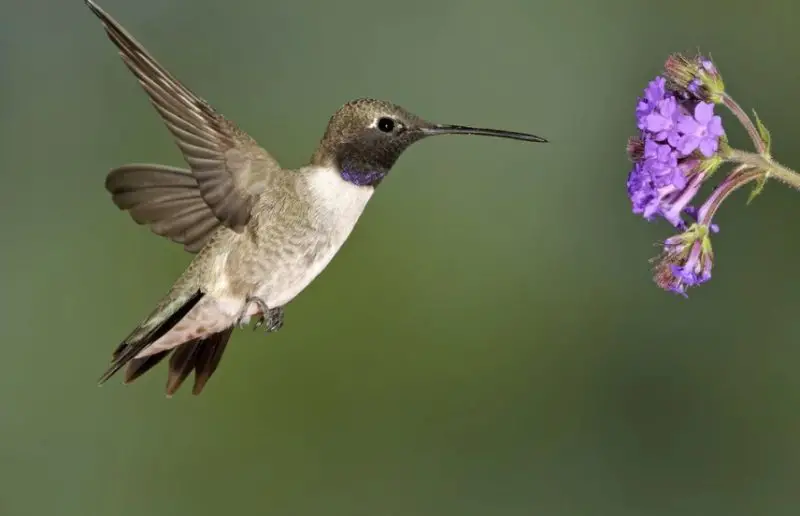
The Black-chinned Hummingbird is a small, agile bird measuring about 3.5 inches long with a wingspan near 4.3 inches. Males are distinguished by their metallic green backs and heads, with a black throat bordered by a thin purple band that can shimmer in sunlight. Females and juveniles are duller, with grayish throats and white underparts.
Their vocalizations include a high-pitched, buzzing “tsip” and a soft chittering sound. These hummingbirds hover expertly at flowers and feeders, using rapid wing beats to maintain position. They are territorial and often chase rivals from their preferred feeding areas, showing impressive aerial agility.
In Nevada, Black-chinned Hummingbirds inhabit riparian corridors, canyons, and suburban gardens mainly in spring and summer. They feed primarily on nectar from flowering plants and supplement their diet with small insects and spiders. Nesting sites are usually hidden in trees or shrubs, where the female builds a tiny cup nest.
Spotted Towhee
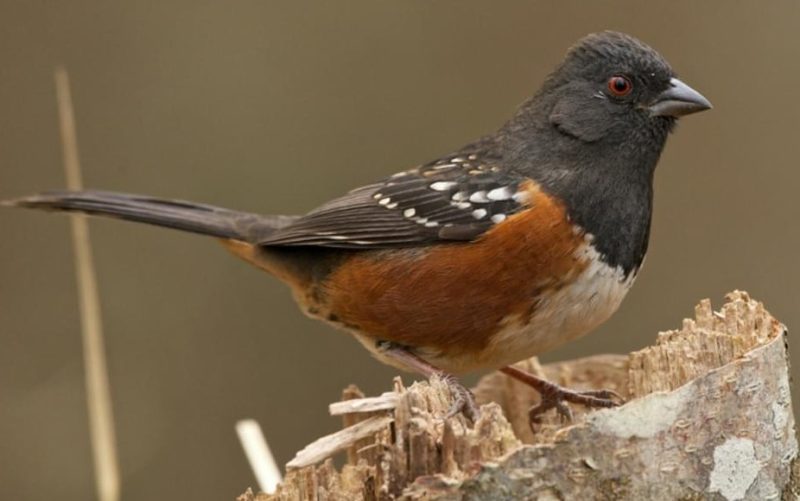
The Spotted Towhee is a striking sparrow-sized bird about 7 to 9 inches long, notable for its black head, throat, and upper body contrasted with white spots on its wings and back. The belly is a rich rusty color, while the sides are white. Their bright red eyes add to their distinctive appearance.
Their song consists of a sharp “drink-your-tea” or “chewink” call, often heard in dense brush or woodland edges where they forage. Spotted Towhees are ground feeders, scratching leaf litter vigorously to uncover seeds, insects, and berries. They are often secretive but vocal when defending territory.
In Nevada, they are commonly found in shrublands, woodlands, and chaparral, especially in the western and northern parts of the state. They prefer thick undergrowth for nesting, building bulky cup nests low in shrubs. Their diet shifts seasonally from mainly insects in summer to seeds and berries in winter.
Brown-headed Cowbird
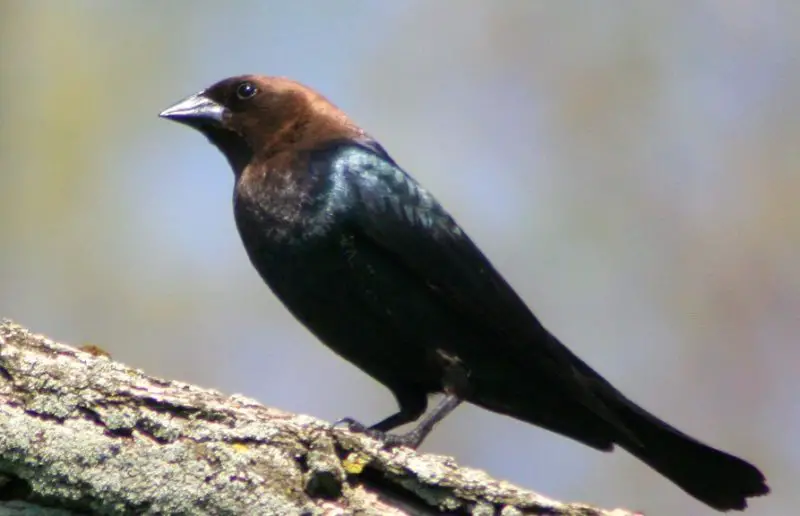
The Brown-headed Cowbird is a medium-sized songbird measuring about 7 to 8 inches long with a wingspan of 11 to 15 inches. Males have glossy black bodies with rich brown heads, while females are more plain, with mottled brown plumage. They have a stout bill and a relatively long tail.
Cowbirds are known for their distinctive bubbly warbling song, a mixture of whistles and trills. They are brood parasites, meaning females lay their eggs in the nests of other bird species and leave the host parents to raise their young. Males are often seen singing from exposed perches during breeding season.
In Nevada, Brown-headed Cowbirds are widespread across grasslands, agricultural fields, and suburban areas. Their diet mainly includes seeds and insects. They tend to follow grazing mammals to catch disturbed insects. Cowbirds are common year-round residents in much of the state.
Black-billed Magpie
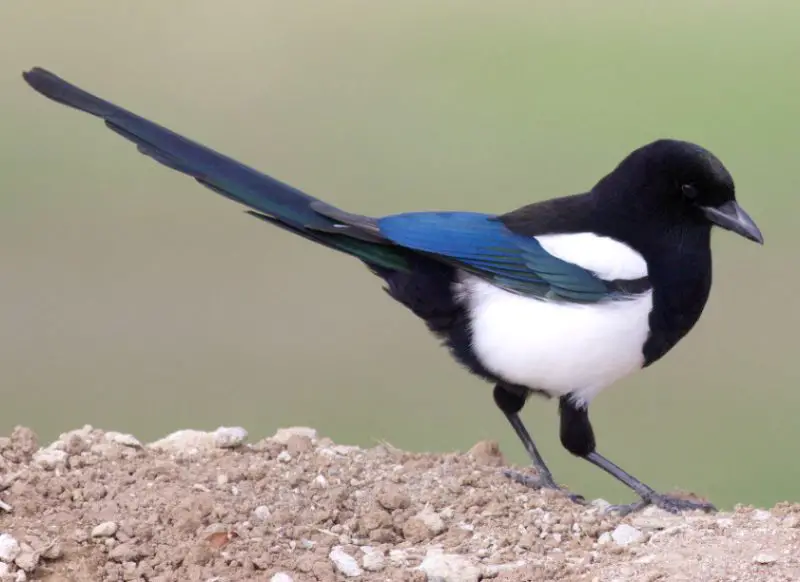
The Black-billed Magpie is a striking corvid about 18 to 24 inches long including its long tail, with glossy black and white plumage and iridescent blue-green wings and tail feathers. Their black bill and face contrast sharply with the white belly and shoulders.
Their vocalizations are a variety of harsh chattering, squawks, and whistles. Magpies are highly intelligent and social, often seen in noisy groups. They build large, dome-shaped nests in tall trees or shrubs, sometimes using thorny branches as protection.
In Nevada, Black-billed Magpies are common in open woodlands, sagebrush steppe, and suburban parks, mostly in the northern and central parts. They are omnivorous, feeding on insects, small mammals, carrion, seeds, and even eggs or nestlings of other birds. Their adaptability makes them a familiar sight in many habitats.
Great-tailed Grackle
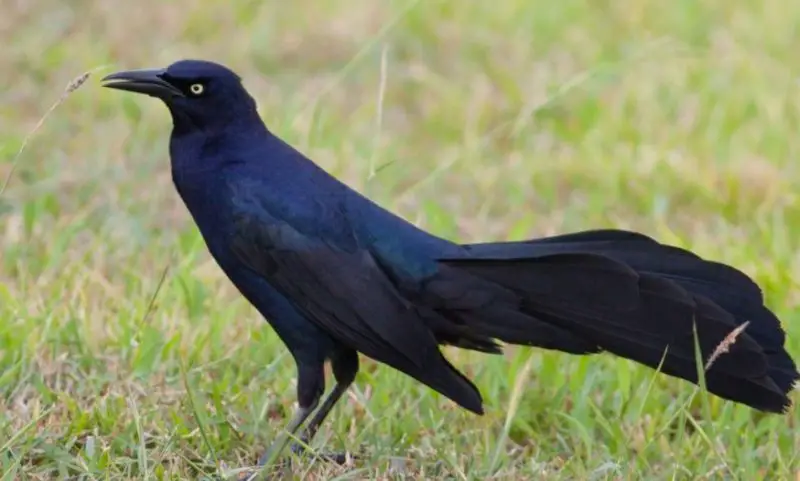
The Great-tailed Grackle is a large, long-tailed blackbird measuring about 16 to 18 inches in length. Males are glossy black with iridescent purple and blue highlights, while females are smaller and brownish with streaked underparts. Their long keel-shaped tails are especially noticeable in flight.
Their call is a loud, harsh, and varied mix of whistles, squawks, and clicks. These birds are highly social and often found in large, noisy flocks. They are opportunistic feeders and highly adaptable, frequently seen near water, parking lots, and urban areas.
In Nevada, Great-tailed Grackles are mostly found in southern parts, including the Las Vegas area, especially near lakes, rivers, and irrigation canals. Their diet includes insects, small fish, fruits, grains, and human food scraps. They nest in dense vegetation or trees near water sources.
Western Bluebird
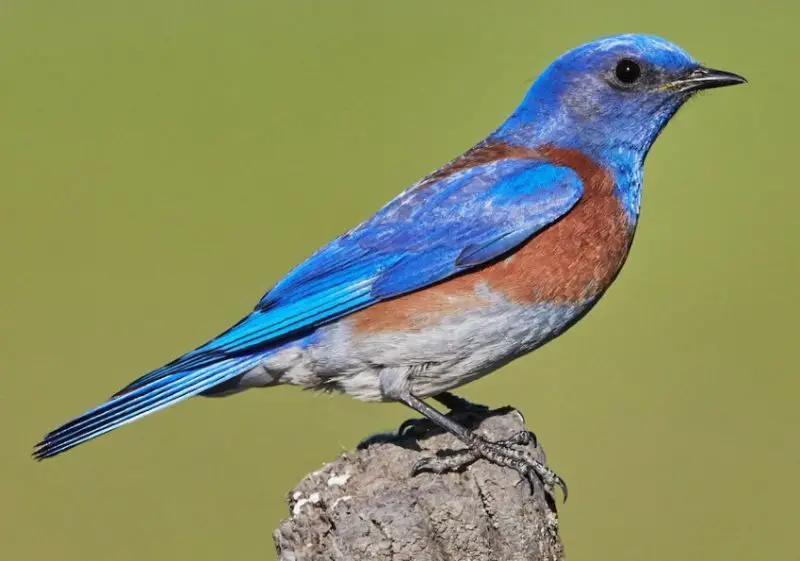
The Western Bluebird is a medium-sized thrush, measuring about 6.5 to 7 inches in length with a wingspan of roughly 11 to 13 inches. Males display vibrant blue upperparts with a rusty orange chest and throat, while females are paler with more subdued blue and gray tones. Their plump bodies and short tails give them a compact, rounded appearance.
Their song is a soft, melodious warble, often heard during the breeding season from open perches like fence posts or tree branches. Western Bluebirds are active insect hunters, frequently seen hovering or flying short distances to catch prey. They also feed on berries, especially in fall and winter.
In Nevada, they inhabit open woodlands, orchards, and suburban parks, mostly in the northern and central parts of the state. They nest in tree cavities or nest boxes and prefer areas with scattered trees and open ground. Their diet varies seasonally between insects and fruit.
Barn Swallow
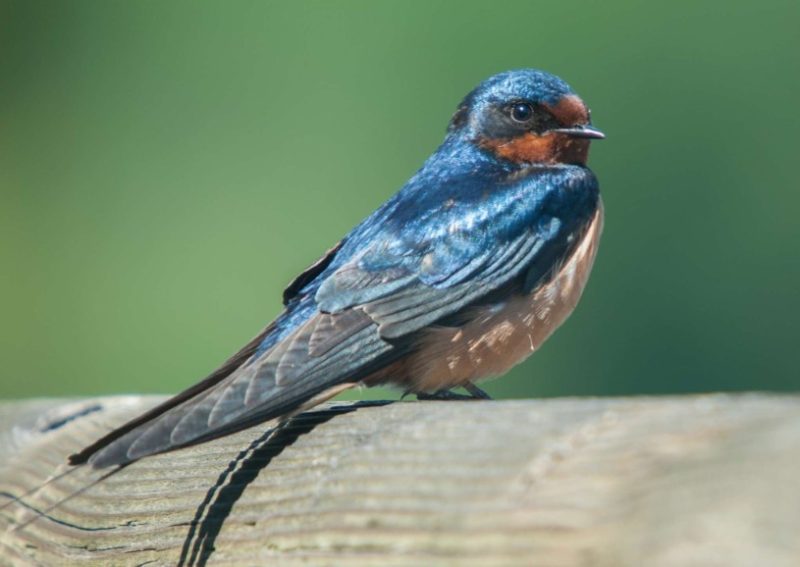
The Barn Swallow is a slender, agile bird about 7 to 8 inches long, easily recognized by its deeply forked tail and iridescent blue upperparts contrasted with a rufous forehead and throat. Its underparts are creamy to light orange, and its streamlined body allows for swift, acrobatic flight.
Their song is a continuous series of cheerful twittering and warbling notes. Barn Swallows are aerial insectivores, catching flying insects on the wing with impressive speed and maneuverability. They often perch on wires or fence posts between feeding flights.
In Nevada, Barn Swallows are common summer residents, breeding in open areas with access to water, such as farms, grasslands, and urban settings. They build mud cup nests usually under bridges, eaves, or inside barns. Their diet consists almost entirely of flying insects, which they catch while airborne.
California Scrub-Jay
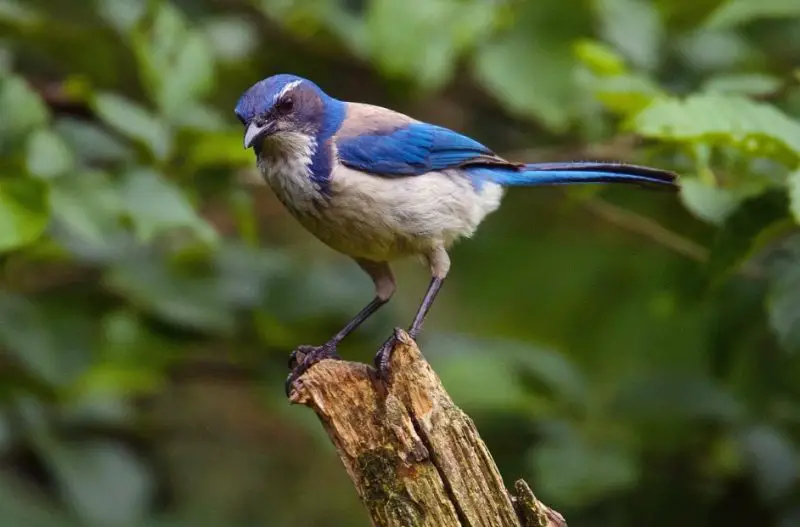
The California Scrub-Jay is a medium-sized songbird about 11 to 12 inches long with a wingspan near 17 inches. It features bright blue head, wings, and tail, with a grayish back and white underparts. Its long, stout bill and bold facial markings make it distinctive among jay species.
Their vocalizations are varied and loud, including harsh “shak-shak” calls and melodic whistles. California Scrub-Jays are curious and intelligent, often seen caching food such as acorns for later use. They are bold around humans and sometimes approach backyards.
In Nevada, these jays are found primarily in oak woodlands, foothills, and suburban areas, especially in western and northern regions. They feed on insects, nuts, seeds, and occasionally small vertebrates. Nesting occurs in shrubs or low trees, where they build bulky cup nests.
Cedar Waxwing
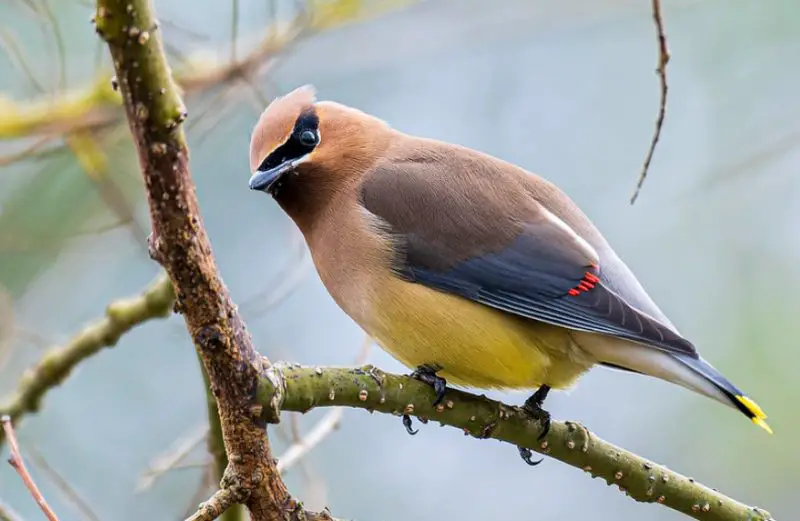
The Cedar Waxwing is a sleek, elegant bird about 6 to 7 inches long with a wingspan of 9 to 12 inches. Its plumage is smooth and silky with pale brown to grayish tones, a yellow belly, and distinctive black mask bordered with white. The tips of the secondary wing feathers often have bright red, wax-like droplets.
Their calls are soft, high-pitched whistles and trills. Cedar Waxwings are highly social and often found in flocks, especially around fruiting trees. They feed primarily on berries and fruits but also catch insects in flight during breeding season.
In Nevada, Cedar Waxwings occur mostly during migration and winter, frequenting parks, orchards, and riparian woodlands. Their ability to digest fermented berries can sometimes lead to intoxicated behavior. They nest in dense shrubs or trees, building neat cup-shaped nests.
White-breasted Nuthatch
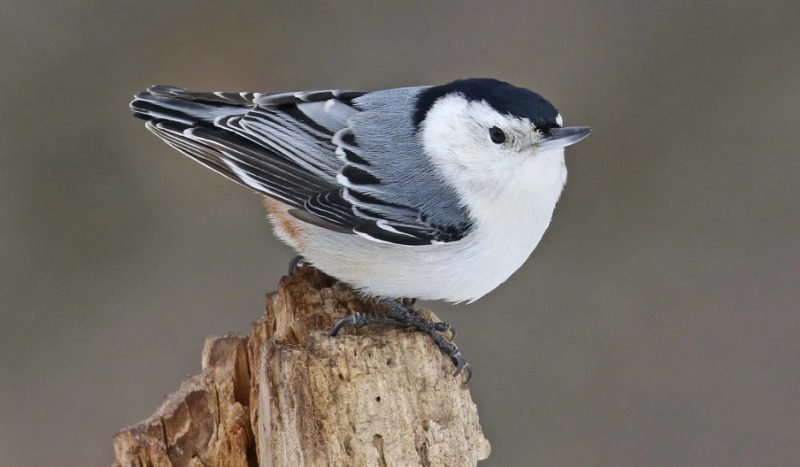
The White-breasted Nuthatch is a small woodland bird about 5 to 6 inches long with a wingspan of 8 to 10 inches. It has a white face and underparts, blue-gray upperparts, and a black cap (in males) or gray crown (in females). Its short tail and strong, slightly upturned bill help it forage on tree trunks.
Nuthatches produce a nasal “yank-yank” call and other sharp notes. They are known for their unique behavior of climbing down tree trunks headfirst as they search for insects hidden in bark crevices. They also store seeds in bark fissures for later.
In Nevada, White-breasted Nuthatches inhabit mature woodlands and suburban areas with plenty of large trees, especially in the northern and higher elevation regions. Their diet includes insects, nuts, and seeds. They nest in natural cavities or old woodpecker holes.
Killdeer
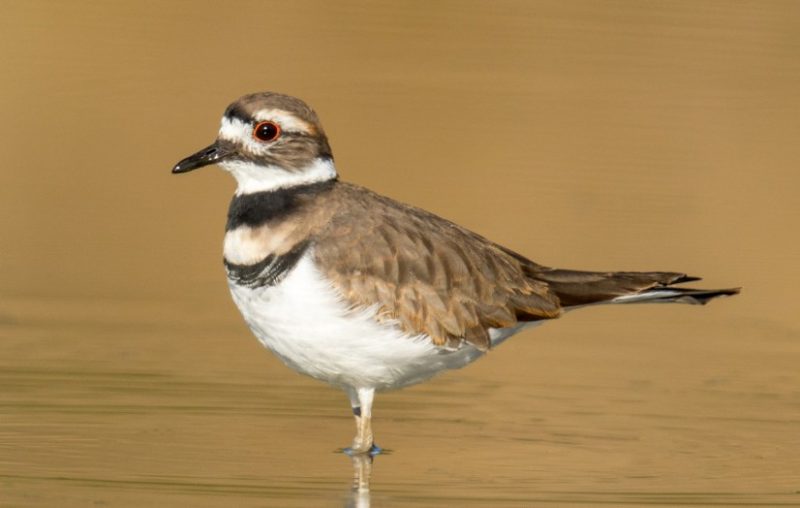
The Killdeer is a medium-sized plover, measuring about 10 to 12 inches long with a wingspan of 18 to 22 inches. It has a distinctive brown back, white belly, and two bold black bands across its white chest. Its long legs and prominent orange eye-ring add to its unique appearance.
Its call is a loud, sharp, and repetitive “kill-deer” whistle, often heard in open habitats. Killdeer are well-known for their “broken-wing” distraction display, used to lure predators away from nests. They forage on the ground, feeding on insects, worms, and small invertebrates.
In Nevada, Killdeer inhabit open fields, shorelines, and even urban parking lots, especially near water sources. They are widespread throughout the state during the breeding season. Their nests are shallow scrapes on gravel or bare ground, often cleverly camouflaged.
Belted Kingfisher
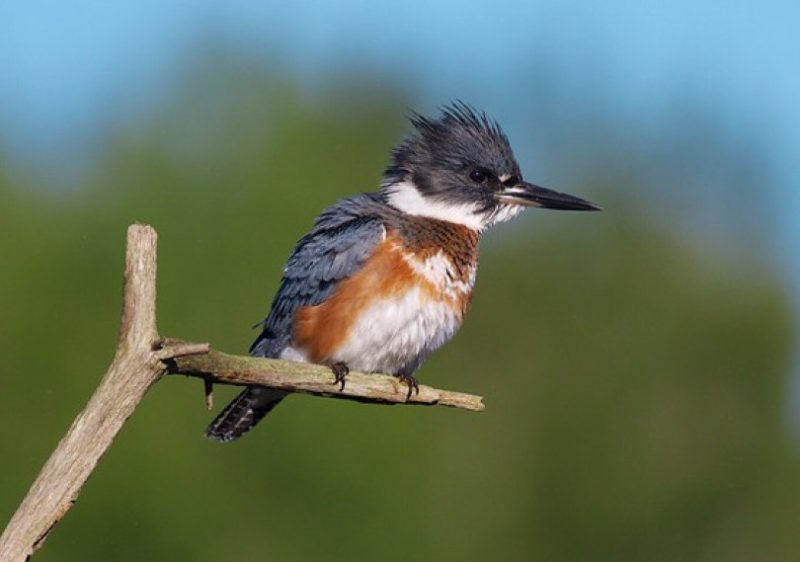
The Belted Kingfisher is a stocky bird about 11 to 14 inches long with a wingspan of 19 to 23 inches. It has a large head with a shaggy crest, blue-gray upperparts, and a white collar around its neck. Females are distinguished by an additional rusty band across the chest.
Its loud, rattling call echoes near rivers and lakes. Belted Kingfishers hunt by hovering or perching above water before plunging headfirst to catch fish. They also eat crustaceans, amphibians, and aquatic insects.
In Nevada, they are found near lakes, rivers, and reservoirs throughout the state. Their nesting burrows are typically dug into sandy or earthen riverbanks. Belted Kingfishers are mostly residents but may be more numerous during migration periods.
Phainopepla
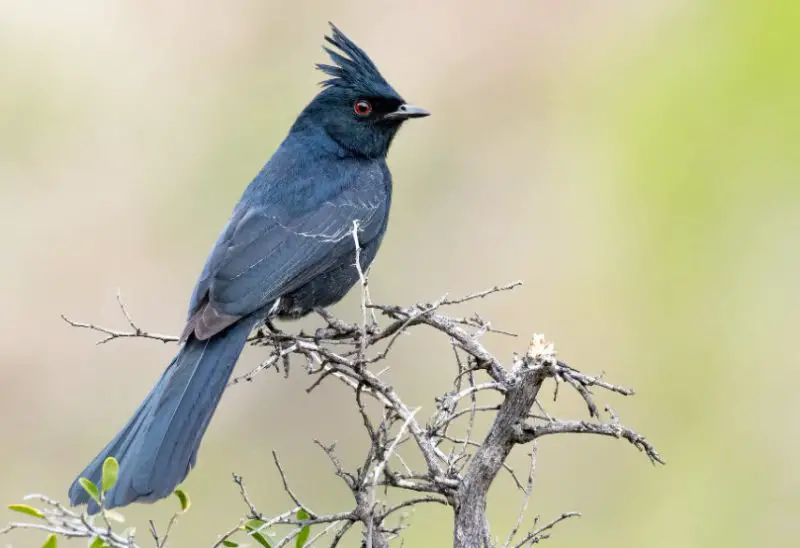
The Phainopepla is a slender, elegant bird about 7.5 inches long with glossy black plumage in males and grayish tones in females. Both sexes have striking red eyes. Their crest is noticeable and often raised, giving them a sleek profile.
They produce soft whistles and high-pitched calls and are known for their graceful flight among desert trees and shrubs. Phainopeplas primarily feed on mistletoe berries and insects, often gleaning insects midair.
In Nevada, they inhabit desert washes, mesquite thickets, and oak woodlands mainly in southern parts during spring and summer. They nest in thorny shrubs or low trees. Their ability to digest mistletoe berries makes them important seed dispersers.
Verdin
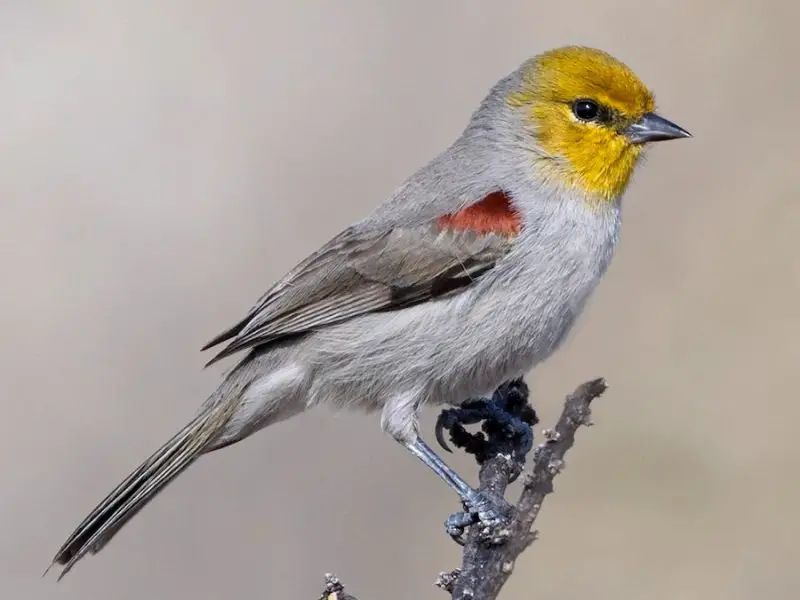
The Verdin is a tiny songbird measuring about 4 to 4.5 inches long with a wingspan near 7 inches. It has a gray body, bright yellow forehead patch, white eyebrows, and a short tail. Its small size and energetic movements make it a delightful sight in desert habitats.
Its vocalizations include a rapid, buzzy trill and sharp chips. Verdins are active foragers, often seen flitting through desert shrubs, gleaning insects and spiders. They build elaborate nests of twigs and spider silk, usually hidden in dense thorny vegetation.
In Nevada, Verdins are common in desert scrub and riparian areas of southern Nevada. They remain year-round residents and are highly adapted to hot, arid environments. Their diet mainly consists of insects and occasionally berries.
Turkey Vulture
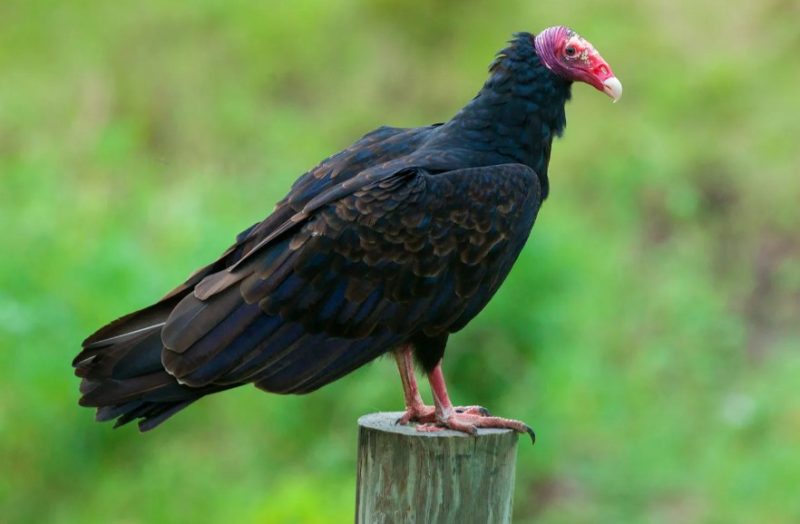
The Turkey Vulture is a large soaring bird with a wingspan of 72 to 77 inches and a length of 26 to 32 inches. It has dark brown to black plumage with a bald, red head and long broad wings that often form a shallow “V” shape in flight.
Turkey Vultures emit a low grunting or hissing sound but lack a true song. They are scavengers, soaring high to locate carrion with their excellent sense of smell. They often circle in groups, riding thermals on warm days.
In Nevada, Turkey Vultures are widespread across open country, deserts, and mountainous regions year-round. They roost in large communal groups in cliffs, trees, or manmade structures. Their ecological role is critical in cleaning up carcasses and preventing disease spread.
Red-tailed Hawk
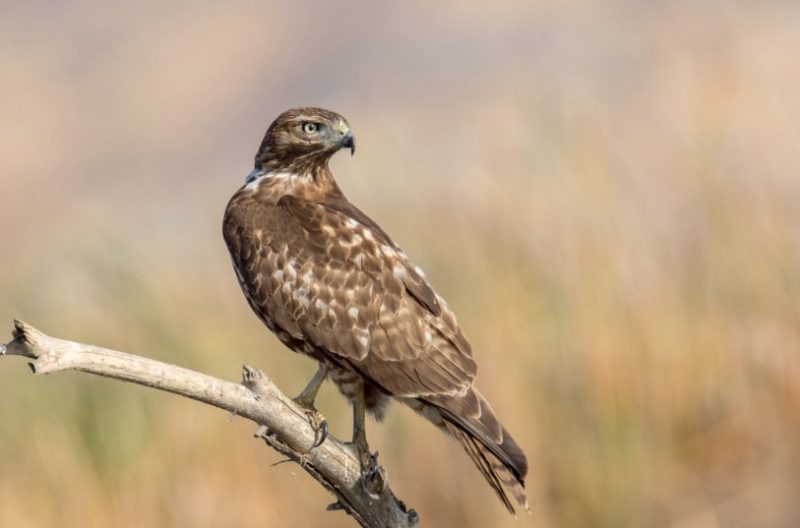
The Red-tailed Hawk is a large raptor measuring about 18 to 26 inches in length with a wingspan of 43 to 56 inches. It has broad, rounded wings and a distinctive reddish-brown tail visible in flight. Its plumage varies but typically features a pale underside with a dark belly band and a brown back.
Its call is a loud, raspy scream often used in movies to represent birds of prey. Red-tailed Hawks soar high on thermals, scanning open fields for prey such as rodents, rabbits, and reptiles. They perch prominently on poles or trees when hunting.
In Nevada, they are widespread year-round across diverse habitats, from deserts to mountains and urban areas. They build large stick nests in tall trees or on cliffs. Their adaptability makes them one of the most common and recognizable hawks in the state.
Northern Harrier
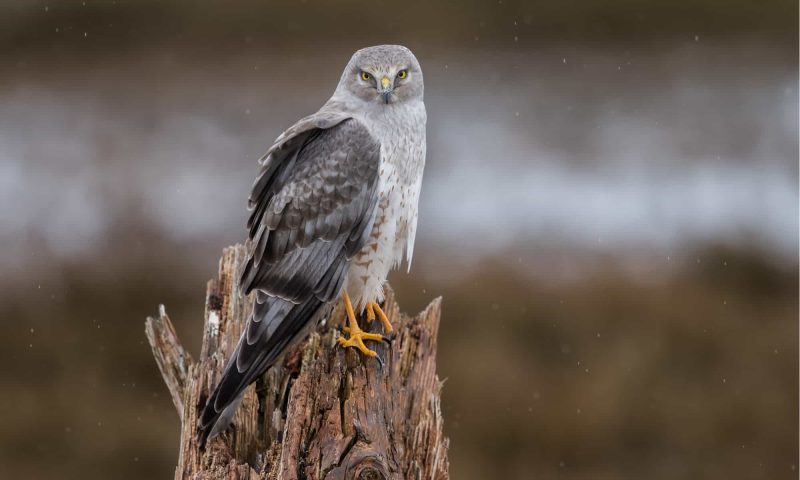
The Northern Harrier is a medium-sized raptor about 17 to 20 inches long with a wingspan of 38 to 49 inches. It has long wings and tail, with a distinctive owl-like facial disc aiding in sound localization. Males are gray above with white underparts, while females are brown with streaked undersides.
Their flight is low and buoyant as they glide over fields and marshes, hunting for small mammals and birds. The call is a series of low, rolling chirps and rattles, often heard during courtship flights. Northern Harriers rely on both sight and sound to detect prey.
In Nevada, they are found mostly in wetlands, grasslands, and open deserts during breeding and migration. They nest on the ground in dense vegetation. These harriers play a vital role controlling rodent populations across the state.
Loggerhead Shrike
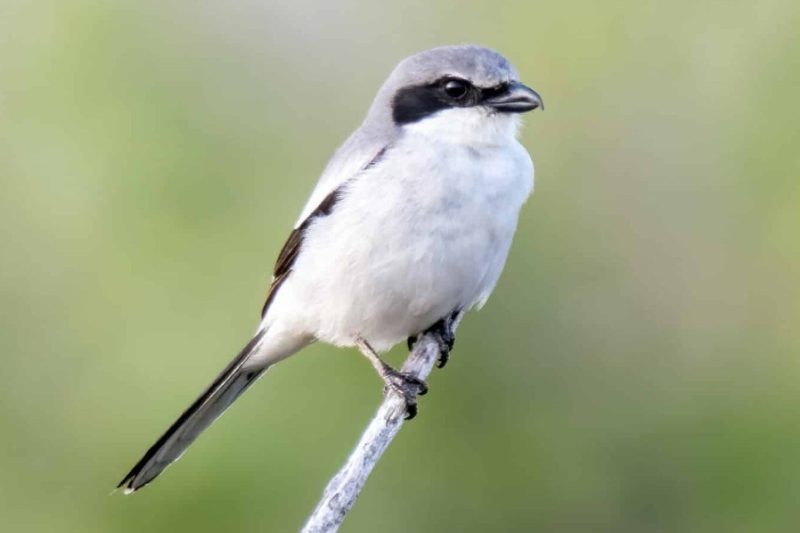
The Loggerhead Shrike is a medium-sized songbird about 9 inches long with a wingspan near 13 inches. It has a gray body, black mask, white underparts, and black wings with a white patch visible in flight. Its hooked bill is powerful for a songbird and essential for hunting.
Known as the “butcher bird,” Loggerhead Shrikes impale prey such as insects, small birds, and rodents on thorns or barbed wire for storage. Their call is a harsh, chattering series of whistles and rattles. They perch conspicuously while hunting from elevated vantage points.
In Nevada, Loggerhead Shrikes inhabit open habitats like grasslands, deserts, and shrublands, especially in the southern and central regions. They are year-round residents and important predators of insects and small vertebrates in arid ecosystems.
Pinyon Jay

The Pinyon Jay is a medium-sized corvid about 12 inches long with a wingspan of approximately 16 to 18 inches. It features smoky blue-gray plumage with lighter underparts and a stout bill. Their bodies are streamlined compared to other jays, adapted for fast, agile flight.
Their vocalizations include harsh “chew” calls and gurgling noises, often heard in large, noisy flocks. Pinyon Jays are highly social and depend heavily on pinyon pine seeds, caching them in the ground for later use. They play a key role in seed dispersal.
In Nevada, Pinyon Jays are common in pinyon-juniper woodlands, especially in the central and northern parts of the state. They nest colonially in dense trees or shrubs and are active year-round. Their foraging supports both forest regeneration and ecosystem health.
Cooper’s Hawk
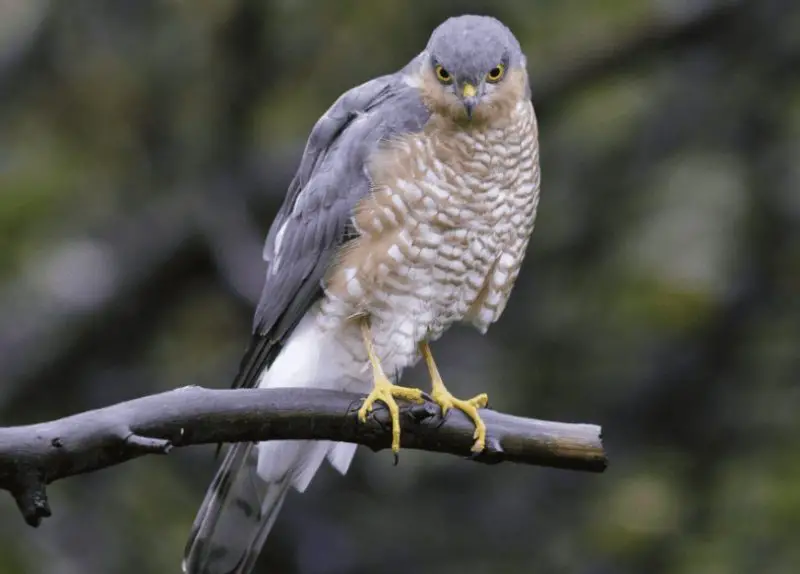
Cooper’s Hawk is a medium-sized hawk about 14 to 20 inches long with a wingspan of 24 to 35 inches. It has rounded wings and a long tail with broad dark bands. Adults have a blue-gray back, reddish-barred chest, and orange-red eyes.
Their flight is fast and agile, often weaving through dense trees while hunting birds and small mammals. The call is a sharp, repeated “kek-kek-kek.” Cooper’s Hawks frequently hunt near wooded suburbs and parks, taking advantage of abundant prey.
In Nevada, they are year-round residents mainly in wooded areas and suburban neighborhoods, especially near water sources. They nest in tall trees and are skilled predators that help control populations of smaller birds.
FAQ about Common Birds in Nevada
What are some common backyard birds in Nevada?
Nevada’s backyard birds often include species like House Finches, Mourning Doves, American Robins, and White-crowned Sparrows. These birds adapt well to urban and suburban environments and can frequently be seen visiting feeders, gardens, and parks throughout the year.
When is the best time to see migratory birds in Nevada?
The best times to observe migratory birds in Nevada are during spring (March to May) and fall (September to November). During these seasons, many species pass through Nevada’s diverse habitats as they travel between breeding and wintering grounds.
What types of habitats do Nevada’s common birds prefer?
Birds in Nevada inhabit a range of environments including deserts, woodlands, wetlands, grasslands, and urban areas. For example, Gambel’s Quail prefer desert scrub, while Western Bluebirds favor open woodlands, and Belted Kingfishers are usually found near water bodies.
How can I attract more common birds to my Nevada backyard?
Providing a variety of native plants, fresh water sources, and bird feeders with seeds like sunflower or nyjer can attract many common birds. Additionally, offering nesting boxes and minimizing pesticide use helps create a safe and inviting habitat.
Are there any endangered or rare birds in Nevada?
Yes, Nevada is home to some rare and protected bird species such as the Southwestern Willow Flycatcher and the Bald Eagle, though these are less commonly seen. Conservation efforts focus on preserving habitats critical to these vulnerable populations.
What do common birds in Nevada typically eat?
Diet varies widely but generally includes seeds, insects, fruits, and nectar. For example, House Finches mainly eat seeds and fruits, while insectivorous birds like Say’s Phoebe feed on flying insects caught in midair.
Can I see birds of prey in Nevada?
Absolutely. Nevada hosts several birds of prey such as Red-tailed Hawks, Cooper’s Hawks, Northern Harriers, and American Kestrels. These raptors can often be seen soaring over open landscapes or perched on utility poles.

